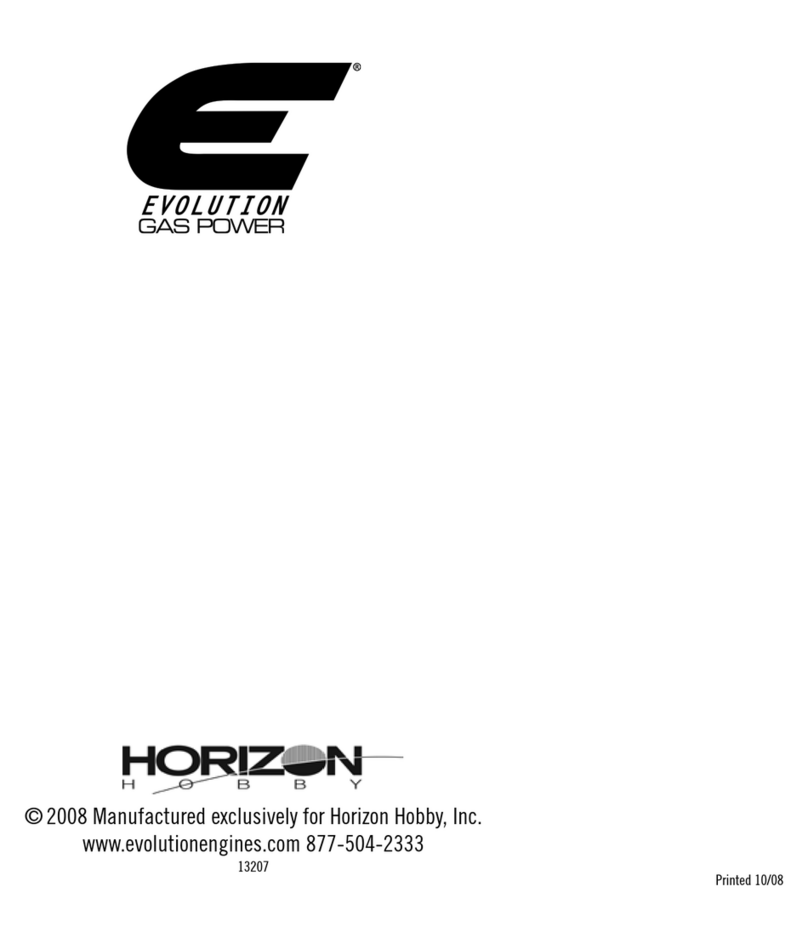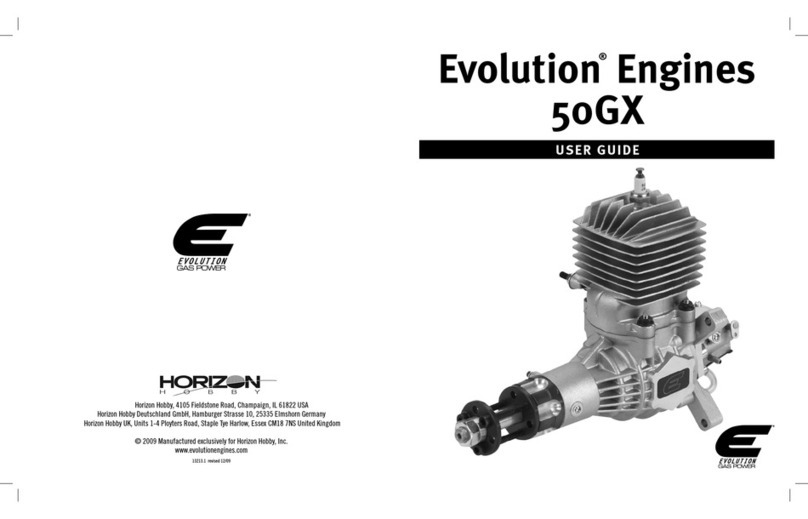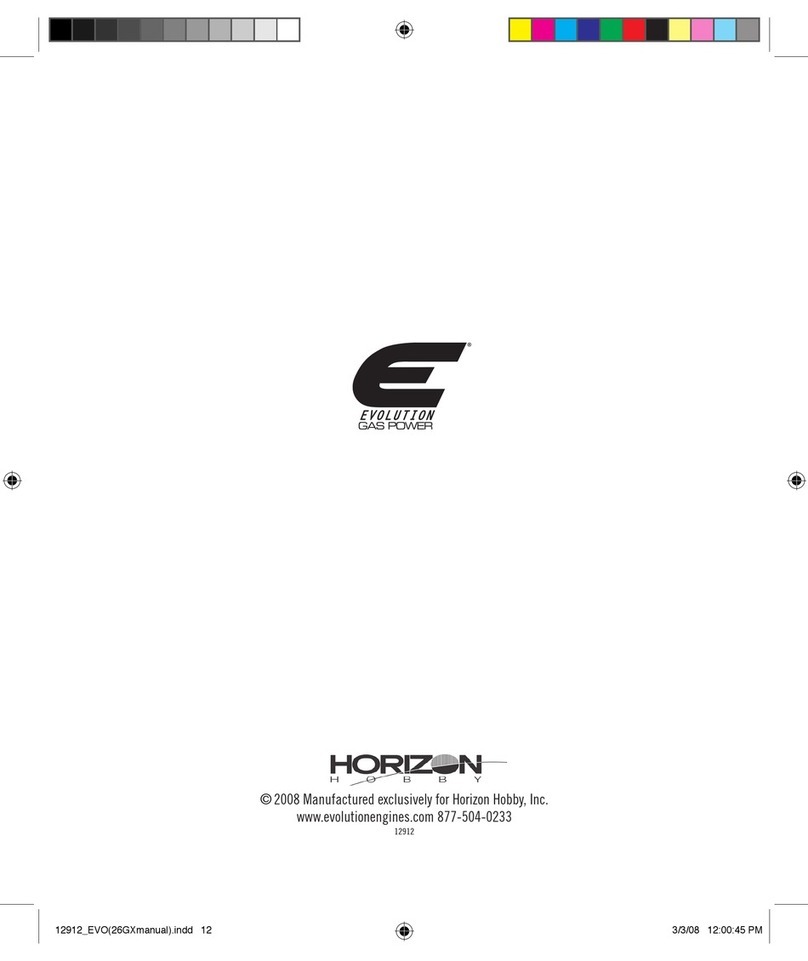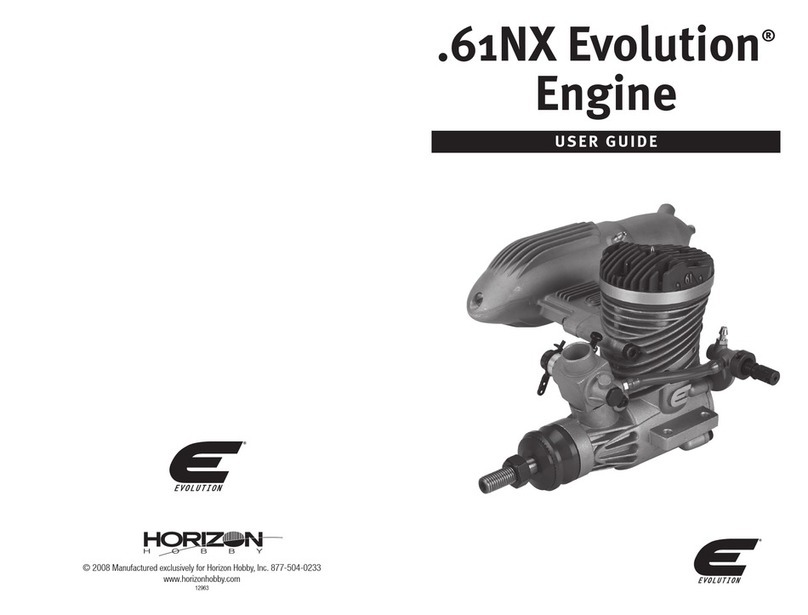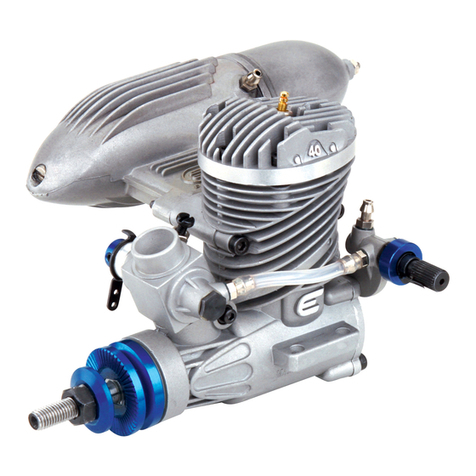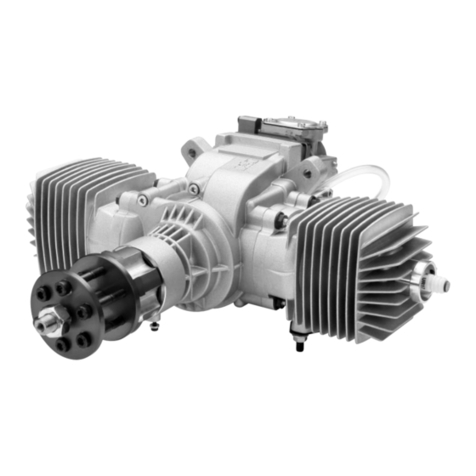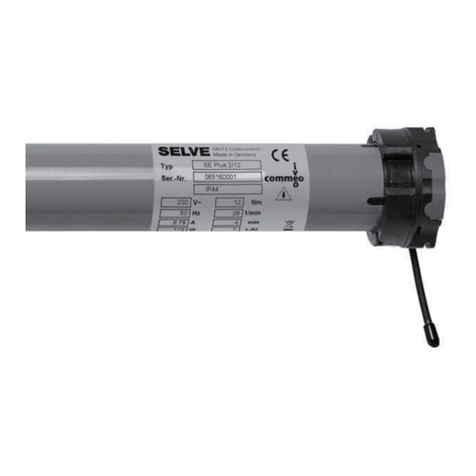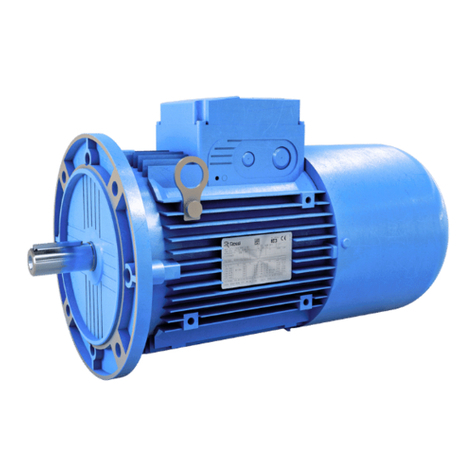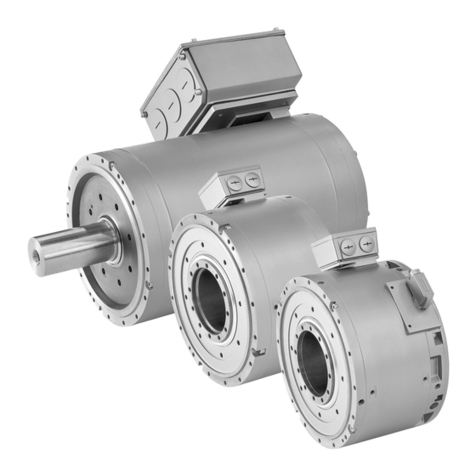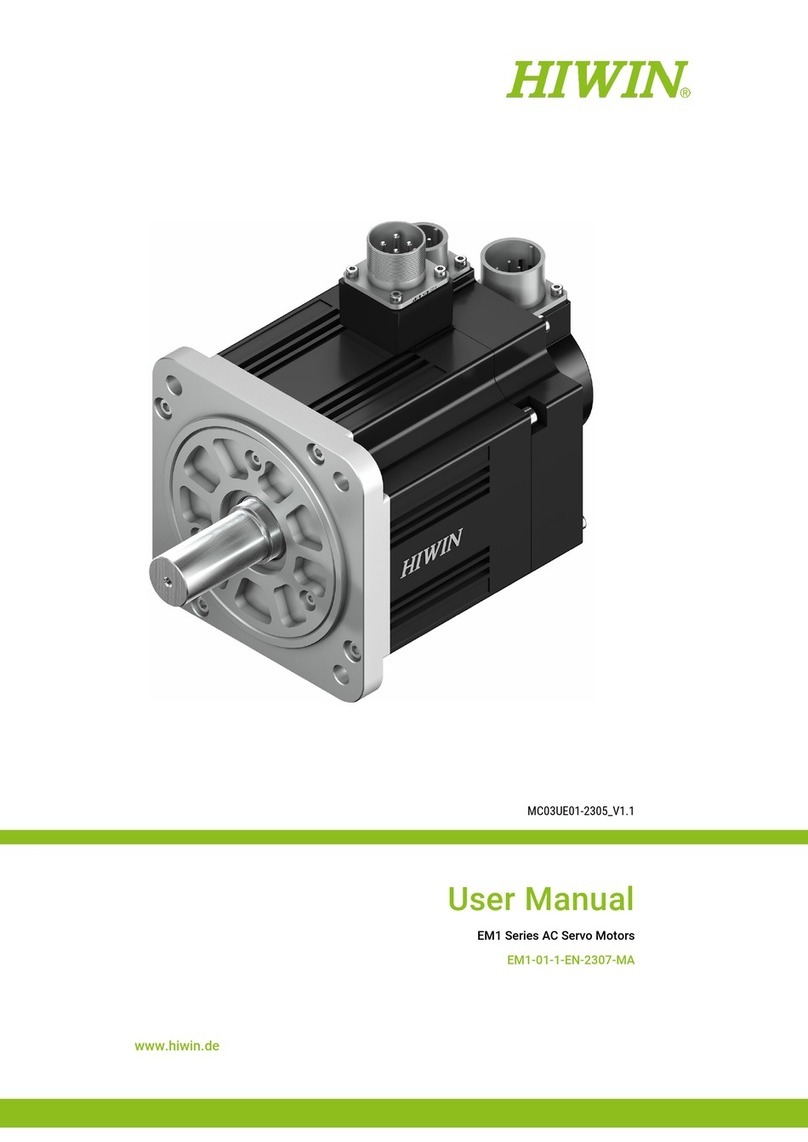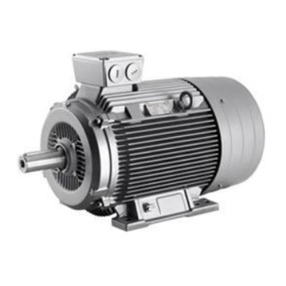
9
The electronic ignition requires a voltage input
of 6.0—8.4VDC. We recommend a 2S Li-Po
battery (such as the Spektrum Li-Po Receiver
Pack 2000mAh (SPMB2000LP)). The maximum
current draw at full throttle is 650mA, and
average current draw is 325mA.
The assembly consists of:
• Ignition module with battery connector,
ignition sensor connector, tachometer readout
connector and spark plug connector
Mounting Your Electronic Ignition
• You can mount the unit in any orientation and
place that is convenient for your installation.
You can also mount it to the firewall or under
the engine firewall extension if your airplane
is so equipped. Keep in mind that it should be
mounted away from the heat of the muffler.
• Secure the ignition module to your chosen
location with foam padding to provide
vibration isolation. We typically mount it with
tie wraps after wrapping the ignition in 1/4-
inch foam rubber.
• You may need to route both the spark plug
connector wire and the ignition sensor wire
through the firewall, so be sure to provide
adequately sized holes that will allow you to
pull either the ignition sensor connector or the
spark plug cap connector through the holes.
• Mount a high-quality switch between the
ignition unit and the battery. Mount this switch
in a convenient place on the outer fuselage
close to the front of the airplane to make it
easy to turn the system on and off. Being able
to easily shut off the ignition power supply is
an important safety consideration.
• For added security and controllability, add
an additional radio-operated kill switch (such
as the Optical Ignition Kill Switch EVOA100)
between the ignition system battery and the
input side of the ON/OFF switch.
• If desired, you can connect the included
Evolution/Spektrum Telemetry Adapter
Cable (EVOA113) to the connector labeled
“Telemetry” on the wiring harness. Plug
the other end of the adapter cable into the
Spektrum telemetry module’s rpm input port.
• Connect the spark plug connector to the
spark plug. This spark plug connector
utilizes a locking snap ring to ensure a solid
connection. Push it straight onto the spark
plug to secure.
• Make sure you charge your ignition battery.
• Ignition sensor (already attached to your
engine)
• Sensor magnet (already installed in the prop
drive hub of your engine)
• Ignition switch (not included)
• 2S Li-Po battery (not included)
Connecting the Electronic Ignition
Baseline Needle Settings
The baseline needle settings for your engine are
1.5 turns out for the high-speed needle, and
1.75 turns out for the low-speed needle.
To adjust the settings, screw the needles in by
rotating them clockwise. They will seat gently—
do not force them, this could damage the
needles or carburetor body. Open the needles
the number of turns listed above.
Low speed needle
High speed needle

